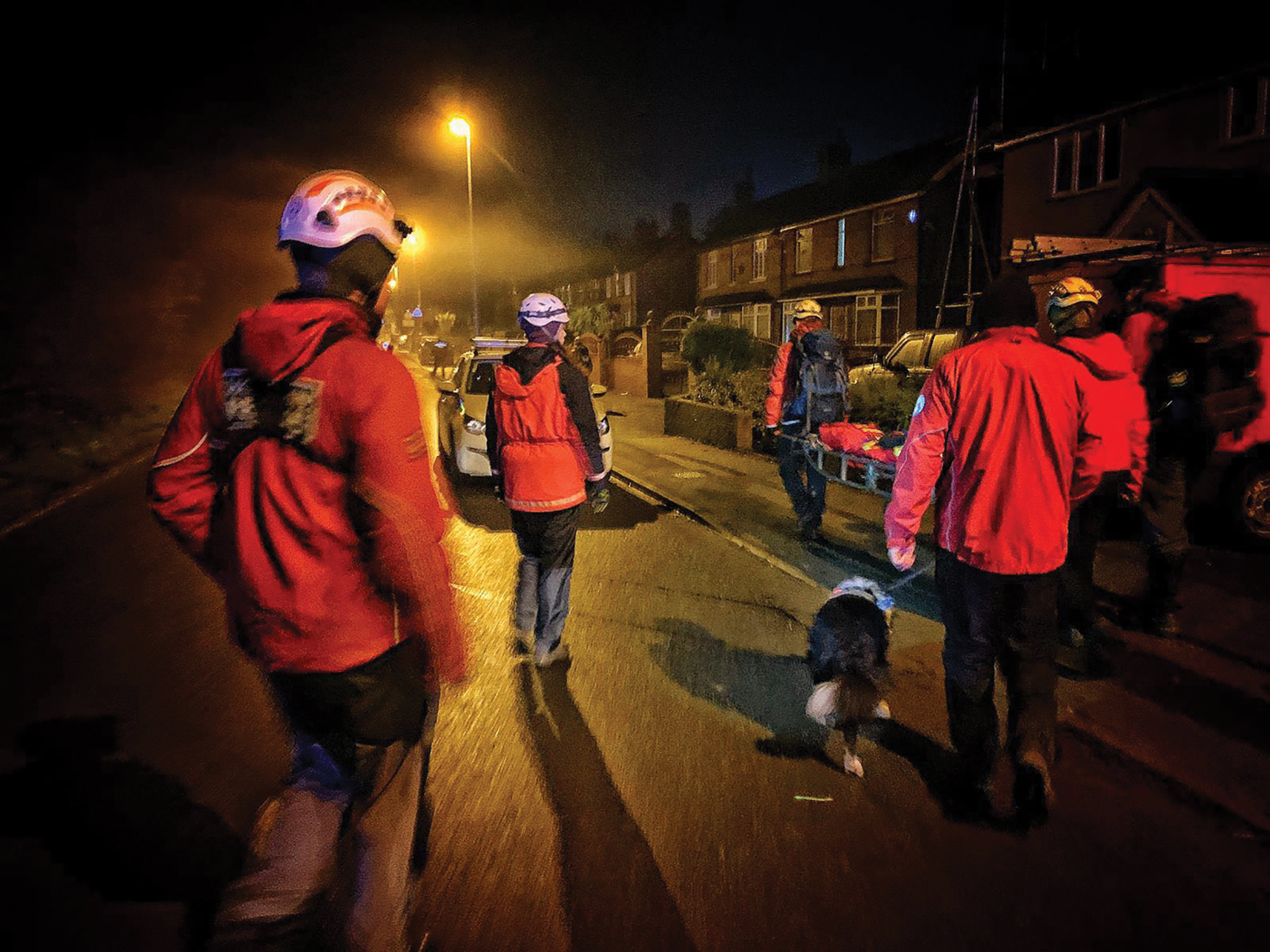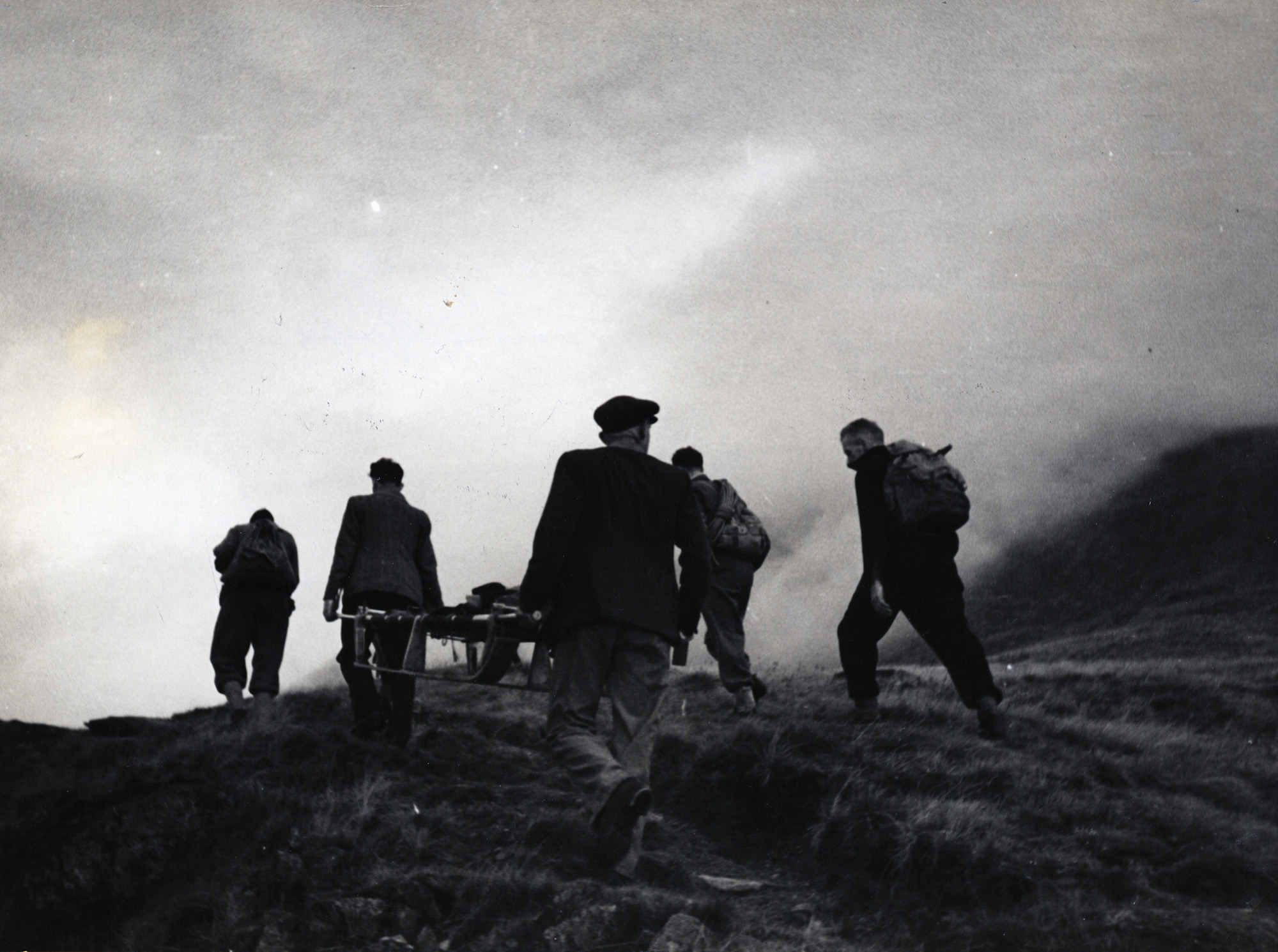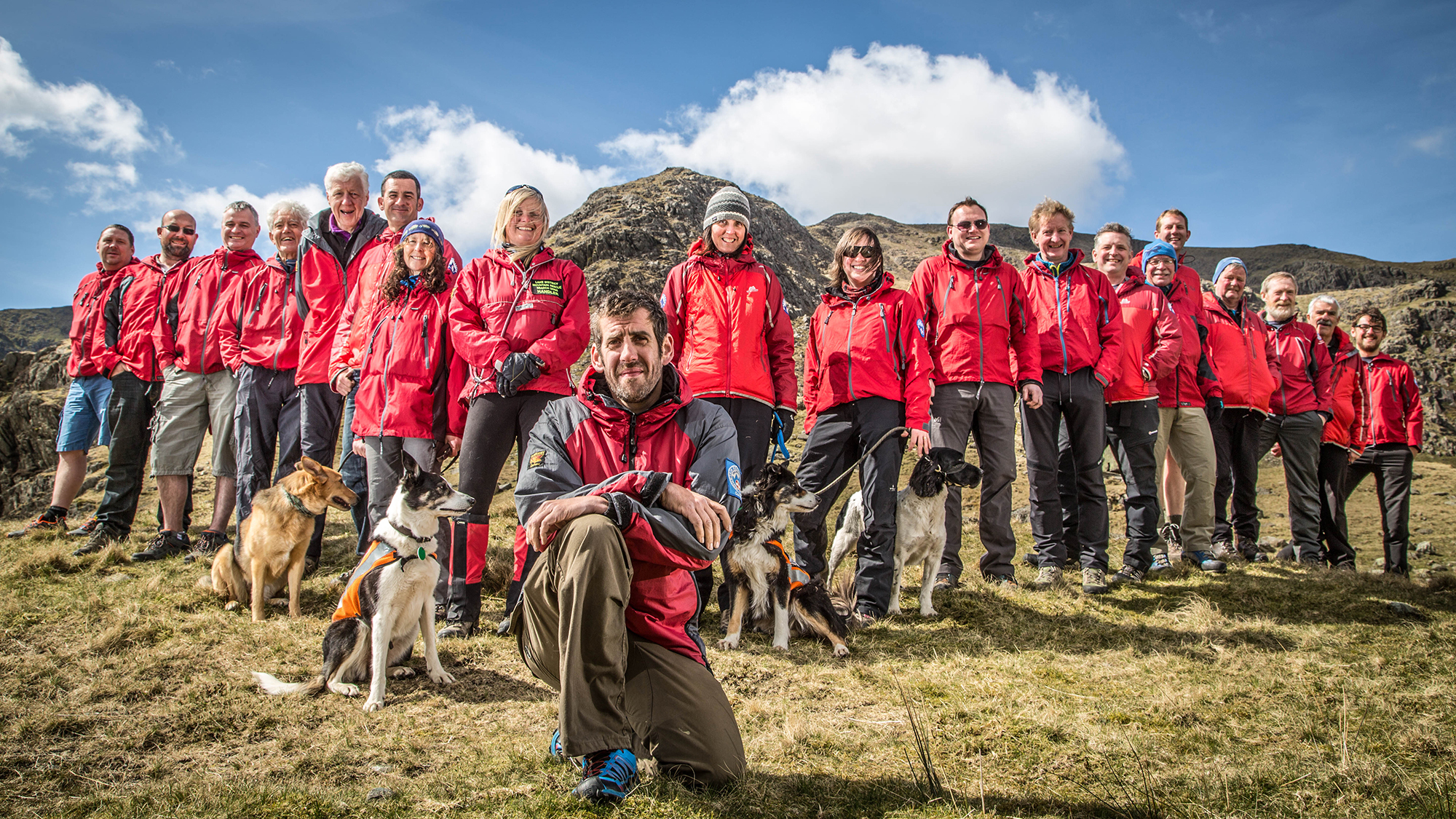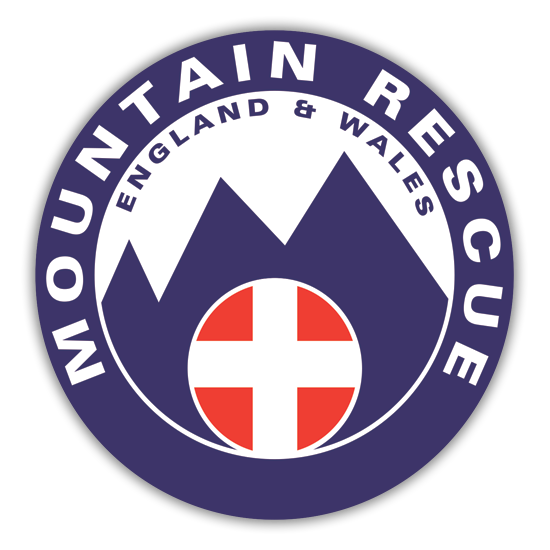Warm baths and soggy underpants…
… and getting #AdventureSmart. At least some things in mountain rescue have changed
Well, here we are in 2019. Christmas done for another year. Baubles packed, tree stripped, crackers cracked. So did you make any New Year resolutions? More outdoor adventure perhaps, a bucket list to tick?
Just before Christmas, Lakeland Walker editor, John Manning, suggested outdoor enthusiasts give mountain rescue teams their best possible Christmas gift by keeping themselves safe.
‘By doing everything you can to eliminate unnecessary risk,’ he said, ‘you’re increasing the chances of those volunteers enjoying an uninterrupted Christmas with their families!’
This wasn’t to be the case.
On Christmas Day itself, just as the sprouts were being crossed, Edale and Buxton team members went to the aid of a woman who’d slipped on muddy ground at Mam Tor and injured her leg.
In the Lakes, four members of Langdale Ambleside were involved for seven hours when a man called for help because he was unable to find his way down from Bowfell after the battery on his phone (his only means of navigation) went flat. He was located using SARLOC and escorted off the hill. An entirely ‘avoidable incident’ (but more about those later).
On the morning of Christmas Eve, Llanberis team members were tasked to recover the body of a man who may have been caught up in a rockfall. The technical rope rescue, on difficult ground, lasted several hours, with team members returning to their homes as darkness set in.
And on Boxing Day, members of the Calder Valley and Holme Valley teams spent their evening searching for a missing 83-year-old man with dementia, in an area crossed with a number of waterways and challenging terrain. In a race against time, the gentleman was discovered in a Leeds street at 2.40am.

But, in truth, as any mountain rescuer will tell you – and many of them did, in their pre-Christmas social media posts – they are more than happy to be on call 24/7, even on Christmas Day.
It’s an ethos baked into the very bones of mountain rescue, from the moment the first ‘official’ rescue teams took shape. The very characteristic that brought them into being.

Warm baths and soggy underpants
It was 20 December 1946 when newly-married Ernest Sivyer and his wife Mary stepped off a train in the Lake District, having travelled through the night. He was to take up the post of secretary and guide at the Holiday Fellowship Centre in Coniston.
Later that cold, frosty morning, 41-year-old Ernest set off across the fells to familiarise himself with the area but he never returned. At first light, a rapidly assembled party of local people set out to search the area around Dow Crags and Coniston Old Man to no avail. Fifty policemen, drafted in from far afield, joined farmers and other willing volunteers to search over 100 square miles of countryside in the most appalling conditions. Heavy rain in the valley turned to snow higher up, with mist down to 500 feet and a gale blowing.
On 23 December, a young police inspector Tom Andrews made an entry in his personal diary, ‘5.30am to 6.30pm. Went to Coniston to search for a missing climber.’ Late the previous evening, he’d been instructed to report to police headquarters in Preston, in uniform, to take charge of a detachment of thirty constables detailed to go to Coniston. At 5.30am they set off, in full uniform, many wearing great coats and macintoshes, caps or helmets and ordinary regulation boots – and some carrying capes.
It rained incessantly. Tom recalled that the inspector, soaked to the skin, asked the wife of the village constable, Jim Leak – who was still out on the fells – if he could come into the police station and have a bath.
‘Mrs Leak, a friendly lady and typical of the traditional British village bobby’s wife, agreed. Then the inspector asked if there was a chance of his borrowing a set of PC Leak’s underwear before putting on his wet uniform. Mrs Leak agreed and, after a hot drink, the inspector returned to Blackburn with his colleagues.’
Constable Leak, who had remained on duty until the detachment left, eventually returned home to the police station for a bath of his own. ‘Mam’, he called to his wife, ‘I can’t find my clean underpants and vest!’
His wife replied that she had let the inspector borrow them and PC Leak would have to wait another day. History does not record whether his underpants ever made it back to their rightful owner.
Tasked to lead various groups of searchers, including the police officers, was professional mountain guide Jim Cameron – who himself spent two days checking every gully and ledge where a body might be concealed. He decided they should search Wetherlam and off they set with strict instructions not to lose sight of each other in the mist because, as Jim remarked, ‘it wouldn’t do to lose a policeman.’ But, by the time they reached the summit, there had already been several mishaps. So the search was called off.
The next day, Christmas Eve, the RAF joined the search around Coniston Old Man, the weather now fairly calm and sunny but, as the party made their way to Tilberthwaite, word reached them the casualty had been found at the foot of a waterfall known locally as the White Lady. He appeared to have fallen about 400 feet down a steep gully, having perhaps lost his footing scrambling over the ice.
It was this search, and the toll it took on everyone involved, that led to the formation of the Coniston Fells Rescue Party (as it was then called), the first civilian mountain rescue team in England, led by Jim Cameron.
And, incidentally, seventy-two years on, Coniston team members attended not one but two call-outs on Christmas Eve 2018. The first, when a young man fell at least 100 feet from the top of a crag. Fortunately for him, nearby walkers were able to go to his immediate aid and, despite the serious injuries sustained, he is alive and on the road to recovery – and grateful to the team who saved his life. The second, in the early evening, when a female walker was unable to continue her descent of Coniston Old Man, due to a medical condition. Busy day.

So much has changed yet so much is the same
We’ve come on a bit since then. Our coats and boots make a far better fist of keeping us dry, we tend not to wear capes, and we can’t remember when we last popped into the local police station for a bath.
People still fall down gullies, slip and trip and still go missing but, where once a ‘busy’ team might deal with ten (or even fewer) call-outs a year, incident numbers can be in treble figures. And over the last five years in particular, the numbers of ‘avoidable incidents’, where there’s a lack of understanding or preparation for the adventure ahead, has grown exponentially. Which means the demand on resources and team members’ time has too.
Okay, so sometimes there are spikes and fluctuations – we get beasts from the east and storms with fancy names (and, very occasionally, peculiarly long, hot summers) – but generally, the trend is upwards with a number of teams reporting ‘record highs’ for 2018, in the Mid Pennines, Northumberland and the Peak District, as well as the usual hotspots of North Wales and the Lakes.
‘The twelve Lakes teams dealt with 654 emergency calls last year,’ says Richard Warren, chairman of Lake District Search and Mountain Rescue Association. ‘Just over 190 of those were what I would class as avoidable – people calling in to say they’re lost or overdue when a bit of forward planning might have prevented them having to call us.
‘We’re starting to recognise that it’s often people coming into the Lakes from outside, who don’t necessarily have an appreciation of what a big mountain is.’
A similar conclusion in North Wales prompted the launch of #AdventureSmartWales, in March 2018, to promote ‘the safe enjoyment of Wales’s natural outdoor resources’ through videos and posters, live information updates and the liberal use of hashtags.
‘We’re not aiming at the expert mountaineers or the readers of Trail magazine,’ says Phil Benbow, chairman of North Wales Mountain Rescue Association, a key partner in the campaign. ‘We’re aiming at the people who decided on the Wednesday night say, in the pub with their pals, to go to the mountains at the weekend. They arrive in blue skies and launch themselves up the mountain. The rain and cloud comes in, they’re wet and cold, they can’t see where they’re going any more, get lost, panic and call us because they think they’re going to die!’
It’s too early yet to assess whether the campaign has been a success. Indeed, whether we’ll ever be able to quantify it fully is moot. Sure, incident numbers have continued to rise but then so has the number of people going out into the hills and, historically, we know that accident figures have always kept pace with rising visitor numbers. We’re talking about changing behaviours here and that takes time. It could be several years before we know whether we’ve prevented those ‘avoidables’ from growing at the same rate.
In the meantime, we want you to go out and have that adventure. Tick off that bucket list. But know how to keep yourself safe.
Enjoy making plans (but don’t be afraid to change them). Discover the hours of fun you can have, wrestling a paper map into submission on a windy day (and plotting your path across it). Make weather-watching part of your day (because, heck, it will be anyway), and take enough kit to keep yourself warm and dry, well-fed and watered. Charge your phone before you leave (but have a notepad and pen handy too, in case you do encounter an accident and need to note down a few details before calling us).
Most of all, have fun. Make a good day in the hills even better.
Postscript: Inspired by Adventure Smart Wales, Adventure Smart Lake District Cumbria is due to launch this spring. We’ll keep you posted as soon as we know more.

A Good Read. Think the Adventure Smart idea is needed. As a hiker and hill walker I am grateful for our 4th emergency Service and appreciate the hours volunteers are prepared to put in. Happy 2019.
Thanks Clive. Appreciate your comment.
Brilliantly presented and written. You may be interested that Jim Cameron’s grandson, Ian, is a helicopter pilot flying the S92 and currently based in northern parts of Scotland. He gets involved in S & R quite frequently.
Hi Alastair. Thank you. And thanks for the info about Ian – fascinating how often the ‘mountain rescue gene’ passes down through the generations – There’s a blog in that somewhere! 😉
I was out on Mam Tor Christmas Day and was surprised to see how many MRT members had had their Christmas day interrupted… Although I was speaking to one of them and he told me how he’d said how they hadn’t had a call out on Christmas day for x amount of years… Jinxed!!!
I take my hat off to all the dedicated team members across the UK and cannot speak highly enough of them, and would like to extend my thanks to them for their hard graft and dedication, and promise I will do everything in my power to not require their services.
[…] #AdventureSmartUK in the Lakes. The campaign which started with #AdventureSmartWales last year (see a previous blog), has been rebranded, the ultimate aim to roll out consistent safety messages across the whole of […]
I am Jim Cameron’s nephew, the son of his younger brother Leslie and cousin of Alastair.
In the 1970s I was working in Manchester. One year in May my parents were on holiday in the Lake District, staying at a pub in Coniston (The Bull?) and Jim, who lived in the village with his wife .Betty, came down for a drink after the meal. I asked him if there was a walkI could do before dark.
“Are you fit?” he asked.
I was in my late twenties and, yes, .I was fit.
“You could do the Old Man”,”he said. “It used to take me an hour and forty five minutes. An hour and a half in season, an hour and forty five the rest of the time.”
He didn’t’t mention that he did this every morning of the year before breakfast,, before setting out on his day’s work in the mountains.
I went up that mountain like a bat out of hell. Near the top, I bumped Ito a man who was staying in the same pub. He was struggling. I had to accompany him to the top and it cost me about ten minutes.
Of course I couldn’t make this feeble excuse when I got back to the pub and found Jim measuring my efforts. “Not bad, not bad, “ he said. “An hour and fifty five.”
Fortunately the man I had helped came in and immediately told Jim he had held me up.
By about ten minutes..
So I would have done it in the time Jim did every day out of season before doing a day’s work until the age of seventy. In season he was out of sight.
They don’t make them like that any more.